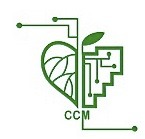
3. So what is Cybernetic Medicine all about?
The Oxford Dictionary defines cybernetics as:
‘The science of systems of control and communications in living organisms and machines'
Cybernetics is a term more used by mathematicians and physicists than by doctors. As a discipline it has relevance to computer science and bio-chemistry but has only recently been applied in a practical sense to modern medicine.
The term, ‘cybernetics,’ was coined by Norbert Wiener, a well-known and much-loved American mathematician, one of the eccentric, absent-minded professors of 1940s academia. A child genius, he was one of the first American mathematicians able to spar intellectually with the cream of European mathematical intelligentsia. Wiener introduced the concept in his book, ‘Cybernetics or Control and Communication in the Animal and the Machine.’ (MIT Press 1948) This was widely recognized as one of the most important books of contemporary scientific thinking.
Cybernetic medicine embraces the concept of the body as a system – or in other words, as an organisation. The successful management of that organisation is dependent on the control of information inflows. And what is information when applied to medicine, rather than to physics? It is still “a difference that makes a difference.” That difference translates in human terms to the difference between health and illness – to a heart which beats calmly to the steady progress of the body’s major organs and systems.
Cybernetics is a theory of control systems – they can be studied and mapped – but the interest is in their activity – not just a snapshot of their present state. Cybernetics focuses on how systems function, how they control their actions and how they communicate with other systems or with their own components. And so in cybernetic medicine the diagnostic focus is on assessing the function of the body organs, not just their current state or output. For example the output of the thyroid gland is regularly measured in conventional medicine by the taking of a blood sample – the level is critiqued according to a comparison with an index of ‘normal’ levels. If the levels in the blood are satisfactory, then the thyroid gland is working fine. The cybernetic approach is radically different. We look at the process as it is taking place. It easier to give an analogy than to explain: Imagine that you need to get to the station by car. The first day, you are given a lift in a brand new Mercedes; music, air-conditioning, the drive goes by in comfort and ease. The second day you borrow an old mini; the battery is slow to start, one of the tyres is soft, the petrol flows badly and the car coughs and bumps its way into town. Both cars get you to the station – but can one honestly say, therefore, that the second result is as good as the first? If measured like the blood tests – both journeys are equally successful. The same output was achieved. So this approach gives cybernetic diagnostics a very big advantage over more conventional health assessment programs. Cybernetic diagnostics can point the way to trouble ahead. Just as it’s quite easy to predict that the mini is likely to break down, so does cellular metabolic analysis anticipate the likelihood of illness and organ failure. Furthermore it can do this in the absence of obvious pathology and often in the face of contradictory symptoms. Many patients are then able to reduce their medicine load as doctors have been able to target the real source of their ‘dis-ease’.
+++++
“When we try to pick up anything by itself
we find that it is attached to everything in the universe.” John Muir
====
Alice asked the Cheshire Cat: "Would you tell me, please, which way I ought to go from here?" To which the cat replied with a smile: "That depends a good deal on where you want to go."